Transcend JetDrive Lite review: An easy way to add local storage to the MacBook Pro
The Transcend JetDrive Lite is as close as you can get to upgrading the internal storage on your modern MacBook Pro, but hard drive-like speeds limit its uses.

1TB Transcend JetDrive Lite 330
Designed for the 2021 16-inch MacBook Pro and 14-inch MacBook Pro, the Transcend JetDrive Lite 330 is a small chip of solid-state storage that slips into the SD card reader to expand capabilities. You'll hardly even notice it is there while you can add up to 1TB of additional storage.
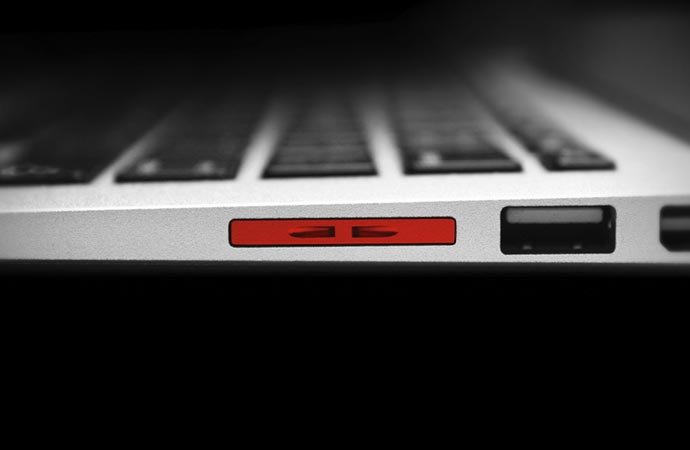
Early Nifty MiniDrive in red anodized aluminum
There was enough space in these Mac back then that the Nifty MiniDrive would act as an adapter for microSD cards. They even came in multiple colors.
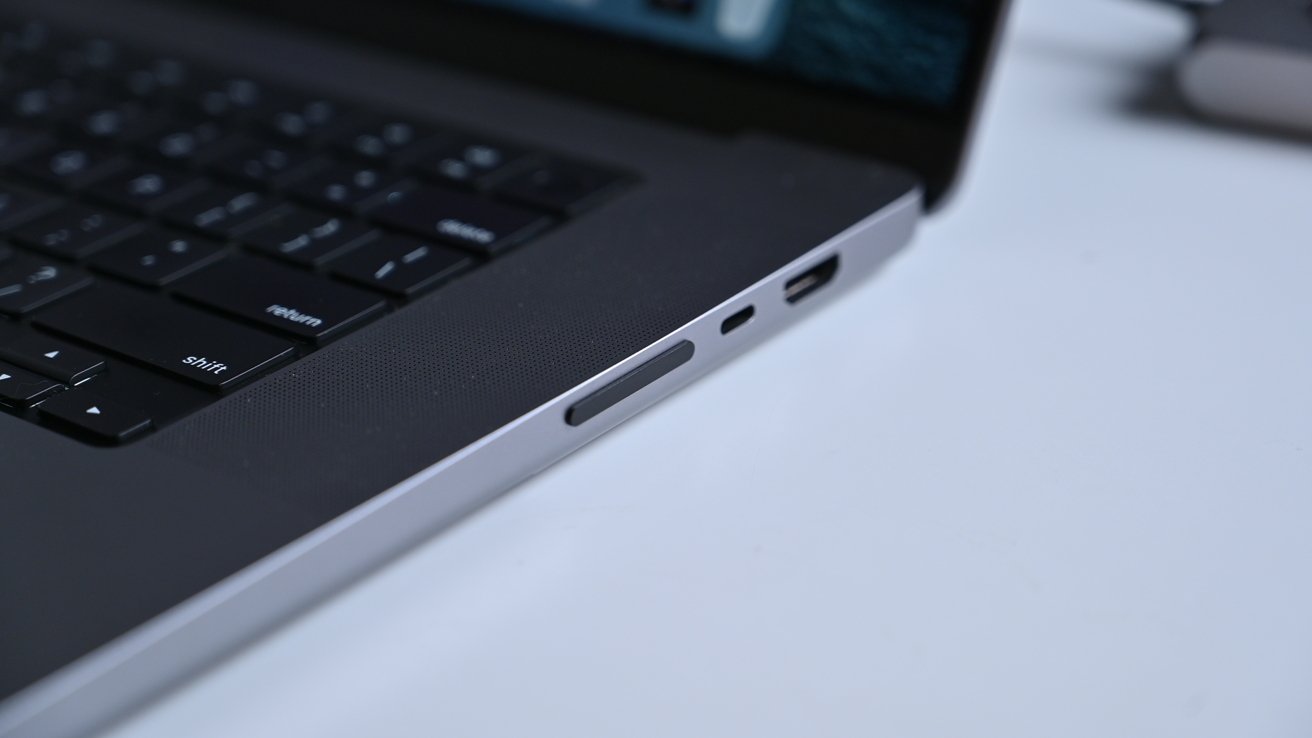
The Transcend JetDrive Lite 330
It is the Nifty MiniDrive and other early entrants that have set the stage for the Transcend JetDrive Lite 330. It isn't Transcend's first drive and they do have some that fit MacBooks as far back as 2010.
All of these drives slip into the SD card slots on your Mac but are sized as to only stick out a hair. Because of this, there is very little overlap in models. Each MacBook with an SD slot has its own corresponding JetDrive.
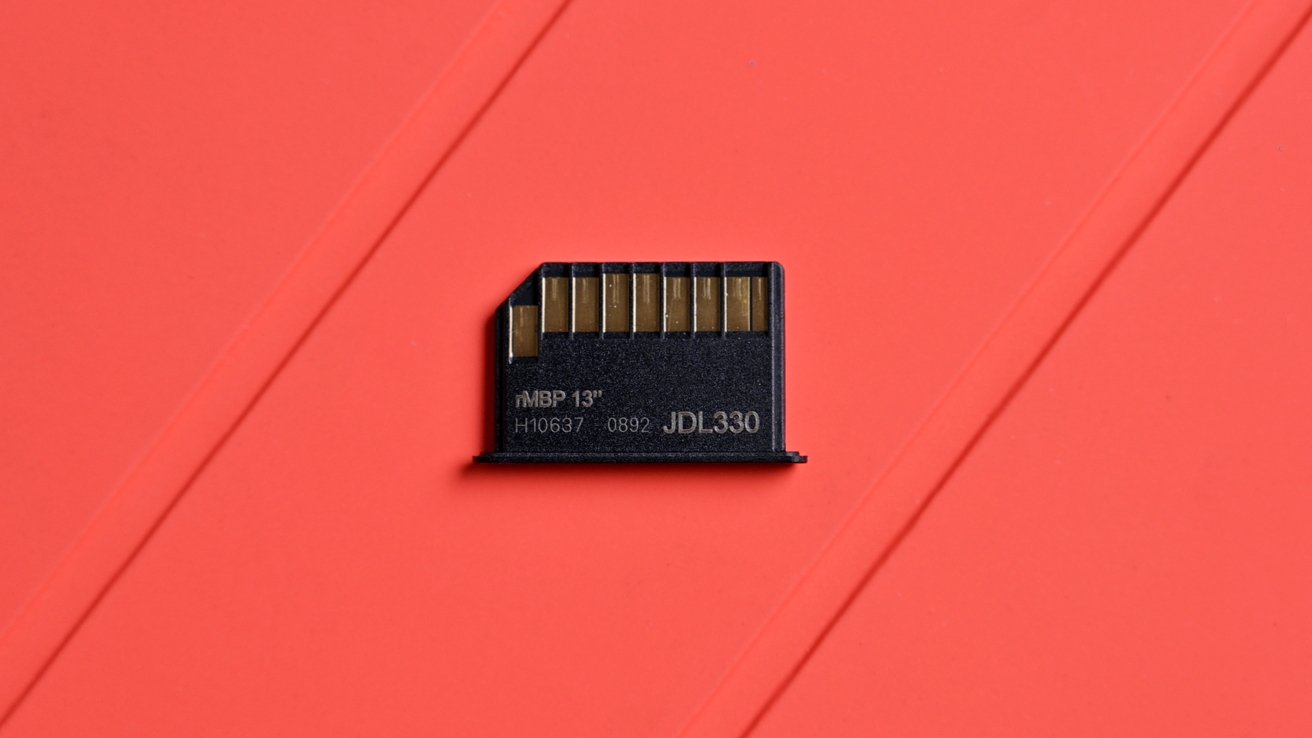
Back of the 1TB Transcend JetDrive Lite 330
The JetDrive Lite is all plastic with a little lip that protrudes out from the edge of your Mac. It is small enough that it doesn't get in the way and is just big enough to grasp if you need to remove it.
We were able to remove the JetDrive with just our fingers, but if you have no fingernails you may struggle a bit. Some others we've seen have sat flush but required a tool to remove. This way, you can pop it out anytime, anywhere -- no tool necessary.
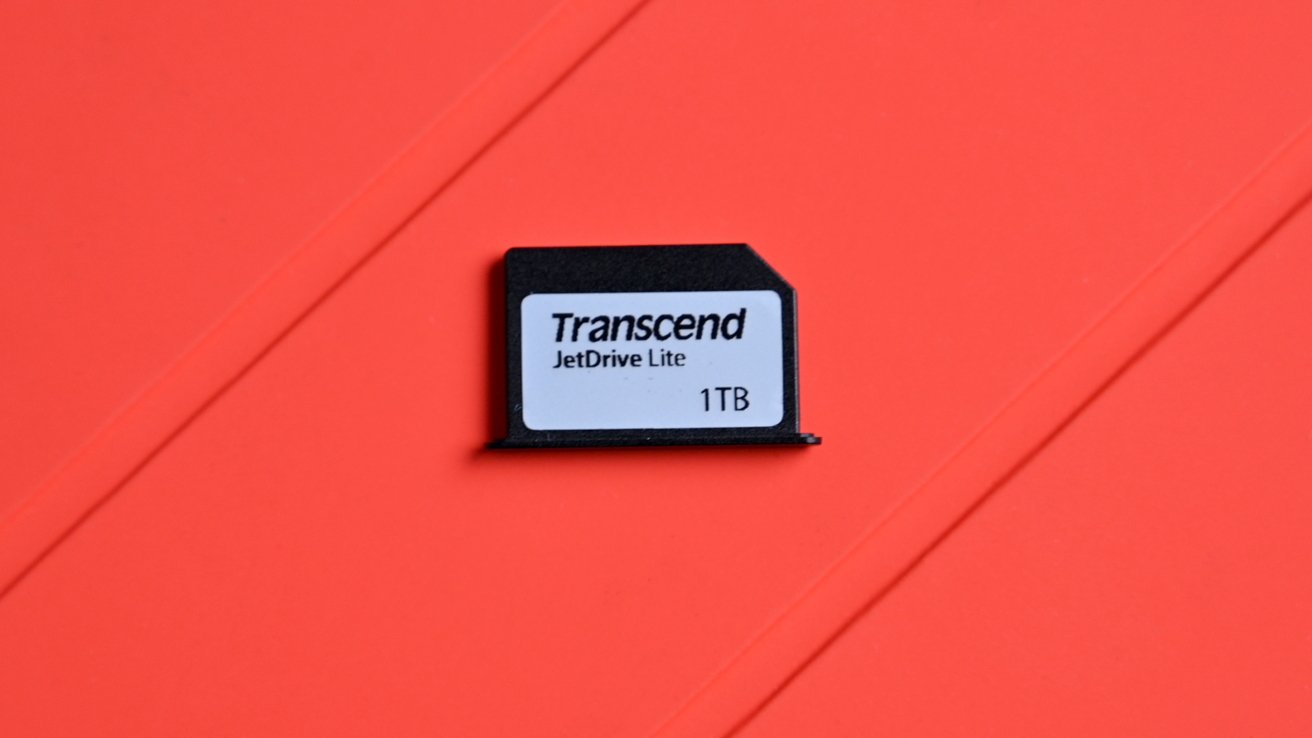
Front of the JetDrive Lite
Transcend has made the JetDrive Lite available in four capacities for the 2021 MacBook Pros. We checked out the 1TB version but 512GB, 256GB, and 128GB capacities are also available.
Blackmagic Disk Speed Test yielded 90.2 MB/s and 75.2 MB/s, in line with expectations. This puts the JetDrive Lite on the same level as UHS-I SD cards
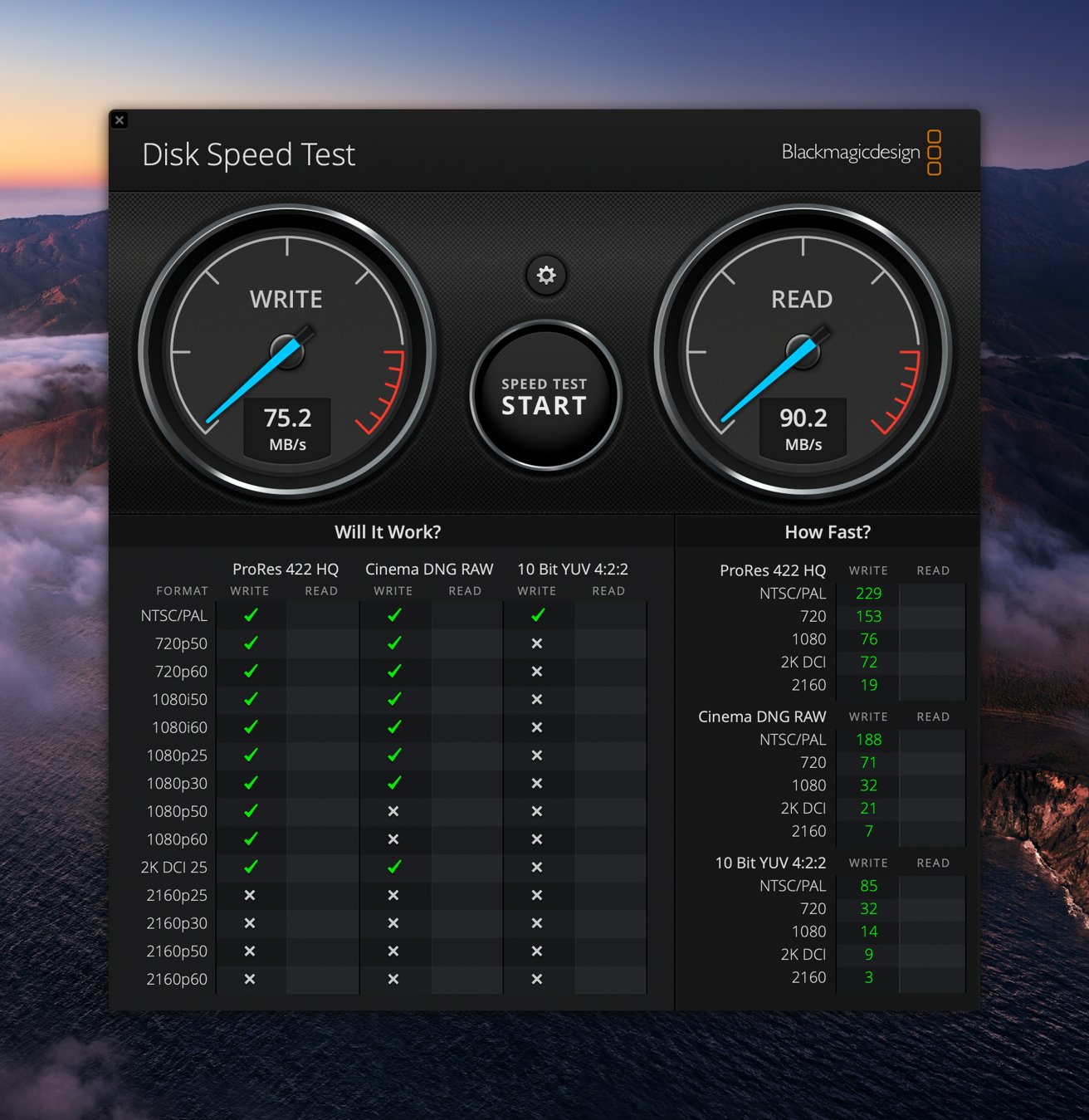
Testing the JetDrive speeds
As the recent MacBook Pros are capable of UHS-II speeds -- up to 312 MB/s -- we wanted to know why the company had opted for the slower speeds.
They told AppleInsider that the biggest benefit of the JetDrive Lite is its compact size and ability to be perpetually in your machine and ready for use, not for high-speed transfers.
While this is undoubtedly true, jumping to UHS-II speeds seems not only possible -- given the size of UHS-II MicroSD cards -- but significantly beneficial to the end-user. Despite the convenience, this was our biggest pain point while using the JetDrive Lite.
Moving to UHS-II speeds would surely up the cost of the drive. This may have been a compromise Transcend was unwilling to make.

Side view of the JetDrive Lite
The JetDrive is no substitute for the blazing fast internal SSD but it is by far the easiest way to add up to 1TB of additional storage to your Mac. With its speed limitations, there are practical -- and non-practical uses for such storage.
By far one of the most common ways to use the JetDrive is to employ it as your Time Machine backup. This works if you have less data on your internal than the JetDrive. If you have the 256GB or 512GB SSD and don't use all of it, the 1TB JetDrive will be sufficient for this.
We only had about 300GB of data on our internal drive so we wanted to test using the JetDrive as a backup solution. We enabled this and allowed Time Machine to chug away overnight for the initial backup. When we woke our machine the following morning, it had finished.
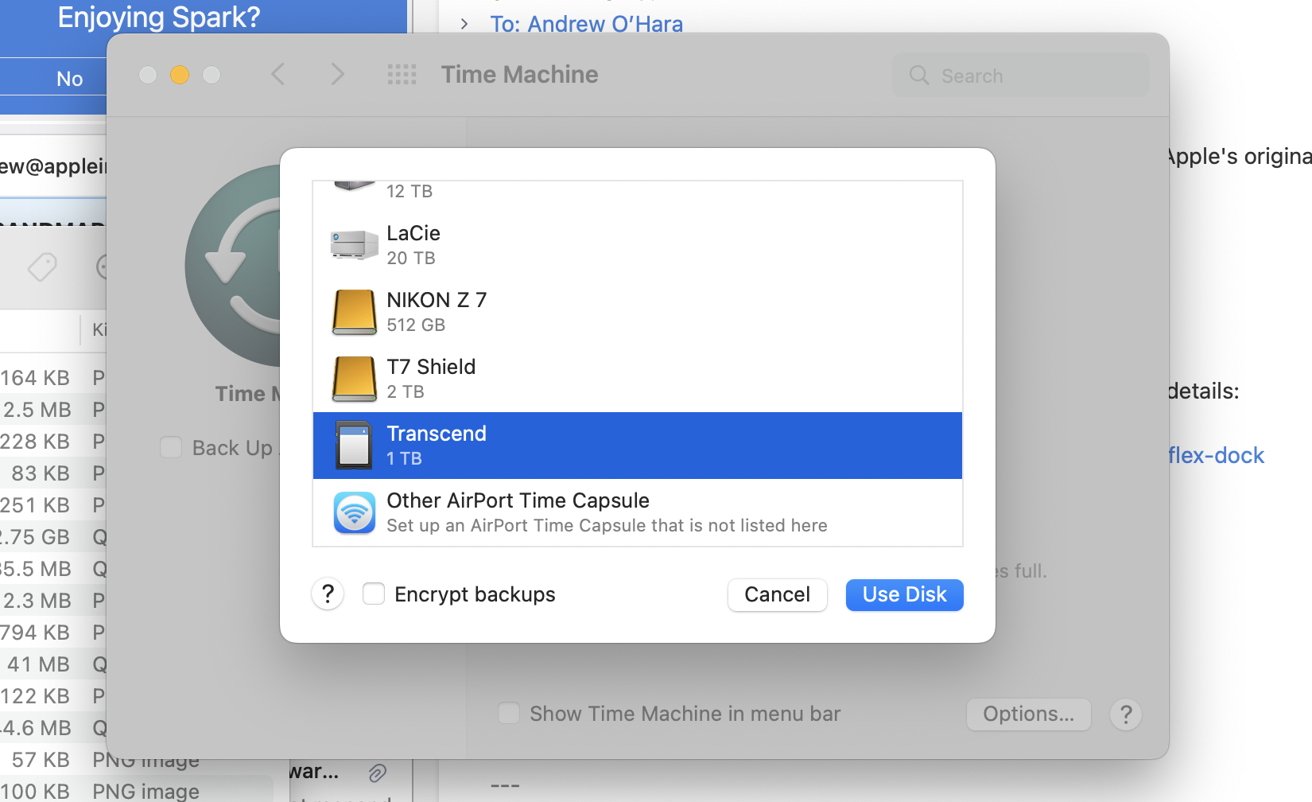
Using the JetDrive as a backup device
Each subsequent backup took mere moments -- depending on how much the data on our Mac changed. Don't forget though, that if something happens to your Mac, your backup may be lost too. An off-site backup or cloud backup is always ideal.
We preferred to use our JetDrive though just for extra storage. We started saving images and documents not stored in iCloud. Accessing files is relatively speedy depending on their size.
It's also proved useful for storing movies. When we head out on trips, we download some movies and TV shows to our Mac to access while on the go. These aren't crucial files which means if we have to remove the card, we aren't missing much.
It took roughly 45 seconds for us to transfer a 3.75 GB movie to the JetDrive, which isn't instantaneous, but fast enough to be useful.
While it works well enough for everyday files, we wouldn't rely on it for video editing. The speed required to edit a 4K video and the vast size of the library makes the JetDrive unusable for this application.
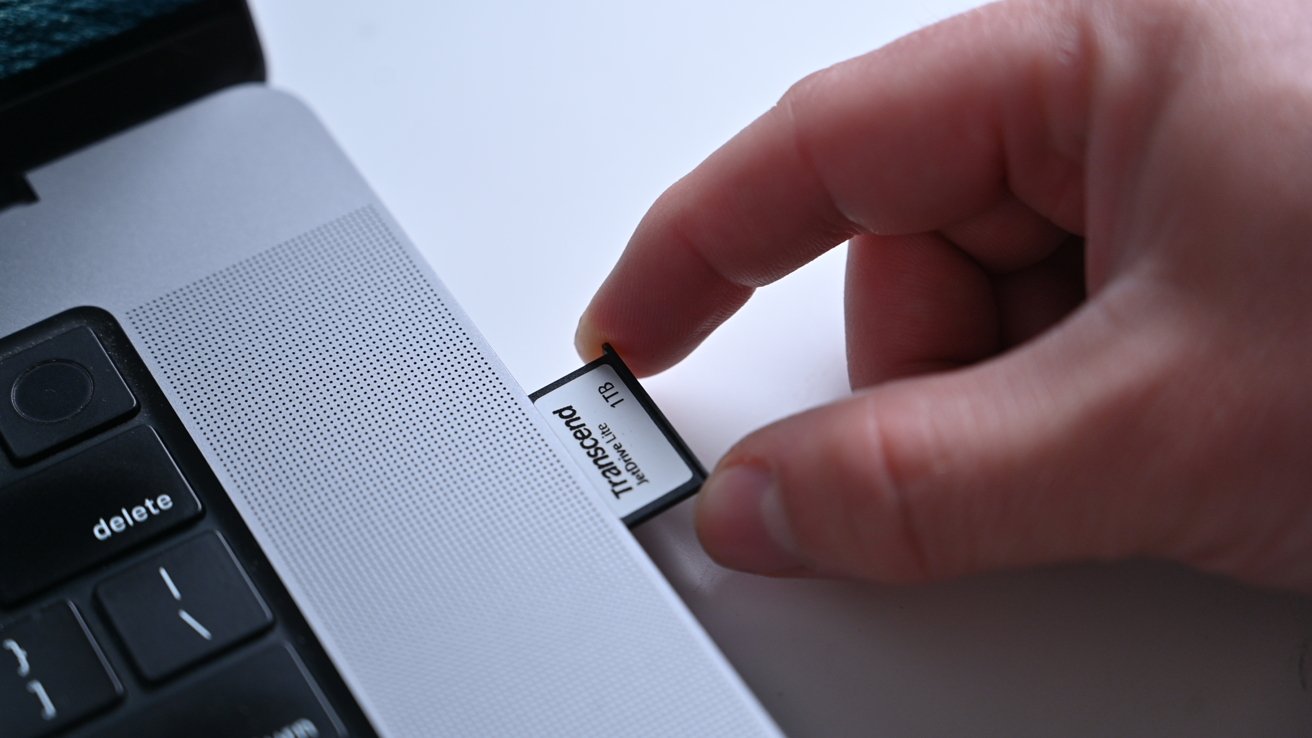
1TB Transcend JetDrive Lite 330
If you opt for the 2TB MacBook Pro, Apple charges a whopping $600 from the base configuration and $400 over the 1TB option. Some may opt for slower speeds to save hundreds of dollars.
At the same time, off-brand MicroSD cards are as cheap as $50 for 1TB. Name-brand microSD cards are priced more competitively with the JetDrive Lite.
Overall, this makes JetDrive a solid choice to expand your storage without breaking the bank. It could even save you money based on your needs. Regardless, it's absolutely the most seamless aftermarket solution out there.
Read on AppleInsider

1TB Transcend JetDrive Lite 330
Designed for the 2021 16-inch MacBook Pro and 14-inch MacBook Pro, the Transcend JetDrive Lite 330 is a small chip of solid-state storage that slips into the SD card reader to expand capabilities. You'll hardly even notice it is there while you can add up to 1TB of additional storage.
Design and use
When Apple first added an SD card reader to the Mac, a slew of third-paltry adapters flooded the market. We vividly remember when an early company called Nifty MiniDrive launched that had an anodized aluminum edge to blend into your Mac seamlessly.
Early Nifty MiniDrive in red anodized aluminum
There was enough space in these Mac back then that the Nifty MiniDrive would act as an adapter for microSD cards. They even came in multiple colors.

The Transcend JetDrive Lite 330
It is the Nifty MiniDrive and other early entrants that have set the stage for the Transcend JetDrive Lite 330. It isn't Transcend's first drive and they do have some that fit MacBooks as far back as 2010.
All of these drives slip into the SD card slots on your Mac but are sized as to only stick out a hair. Because of this, there is very little overlap in models. Each MacBook with an SD slot has its own corresponding JetDrive.

Back of the 1TB Transcend JetDrive Lite 330
The JetDrive Lite is all plastic with a little lip that protrudes out from the edge of your Mac. It is small enough that it doesn't get in the way and is just big enough to grasp if you need to remove it.
We were able to remove the JetDrive with just our fingers, but if you have no fingernails you may struggle a bit. Some others we've seen have sat flush but required a tool to remove. This way, you can pop it out anytime, anywhere -- no tool necessary.

Front of the JetDrive Lite
Transcend has made the JetDrive Lite available in four capacities for the 2021 MacBook Pros. We checked out the 1TB version but 512GB, 256GB, and 128GB capacities are also available.
Speed and performance
Transcend is promising speeds of 95 MB/s and 75 MB/s for reading and writing, respectively. In our copious testing, the JetDrive Lite is on par for these numbers.Blackmagic Disk Speed Test yielded 90.2 MB/s and 75.2 MB/s, in line with expectations. This puts the JetDrive Lite on the same level as UHS-I SD cards

Testing the JetDrive speeds
As the recent MacBook Pros are capable of UHS-II speeds -- up to 312 MB/s -- we wanted to know why the company had opted for the slower speeds.
They told AppleInsider that the biggest benefit of the JetDrive Lite is its compact size and ability to be perpetually in your machine and ready for use, not for high-speed transfers.
While this is undoubtedly true, jumping to UHS-II speeds seems not only possible -- given the size of UHS-II MicroSD cards -- but significantly beneficial to the end-user. Despite the convenience, this was our biggest pain point while using the JetDrive Lite.
Moving to UHS-II speeds would surely up the cost of the drive. This may have been a compromise Transcend was unwilling to make.
Uses and applications
Apple's current portable Mac lineup does not support user-upgradable storage. Meaning the storage you opt for on purchase is what you'll be working with years later.
Side view of the JetDrive Lite
The JetDrive is no substitute for the blazing fast internal SSD but it is by far the easiest way to add up to 1TB of additional storage to your Mac. With its speed limitations, there are practical -- and non-practical uses for such storage.
By far one of the most common ways to use the JetDrive is to employ it as your Time Machine backup. This works if you have less data on your internal than the JetDrive. If you have the 256GB or 512GB SSD and don't use all of it, the 1TB JetDrive will be sufficient for this.
We only had about 300GB of data on our internal drive so we wanted to test using the JetDrive as a backup solution. We enabled this and allowed Time Machine to chug away overnight for the initial backup. When we woke our machine the following morning, it had finished.

Using the JetDrive as a backup device
Each subsequent backup took mere moments -- depending on how much the data on our Mac changed. Don't forget though, that if something happens to your Mac, your backup may be lost too. An off-site backup or cloud backup is always ideal.
We preferred to use our JetDrive though just for extra storage. We started saving images and documents not stored in iCloud. Accessing files is relatively speedy depending on their size.
It's also proved useful for storing movies. When we head out on trips, we download some movies and TV shows to our Mac to access while on the go. These aren't crucial files which means if we have to remove the card, we aren't missing much.
It took roughly 45 seconds for us to transfer a 3.75 GB movie to the JetDrive, which isn't instantaneous, but fast enough to be useful.
While it works well enough for everyday files, we wouldn't rely on it for video editing. The speed required to edit a 4K video and the vast size of the library makes the JetDrive unusable for this application.
Should you buy the Transcend JetDrive Lite?
Cost-wise, the JetDrive Lite 330 is neither good nor bad. Apple charges $200 to upgrade from 512GB to 1TB of storage. You can spend less than that on the 1TB JetDrive Lite, though it is certainly slower.
1TB Transcend JetDrive Lite 330
If you opt for the 2TB MacBook Pro, Apple charges a whopping $600 from the base configuration and $400 over the 1TB option. Some may opt for slower speeds to save hundreds of dollars.
At the same time, off-brand MicroSD cards are as cheap as $50 for 1TB. Name-brand microSD cards are priced more competitively with the JetDrive Lite.
Overall, this makes JetDrive a solid choice to expand your storage without breaking the bank. It could even save you money based on your needs. Regardless, it's absolutely the most seamless aftermarket solution out there.
Transcend JetDrive Lite Pros
- Designed exclusively for the 2021 MacBook Pros
- Doesn't stick out the side of your Mac
- Closest you can get to upgrading your internal storage
- Good option for Time Machine backups or storing additional files
- 64GB to 1TB options available
Transcend JetDrive Lite cons
- All-plastic construction
- Hard drives can be faster
Rating: 3.5 out of 5
Where to buy
Pick up the Transcend JetDrive Lite 330 for the 2021 MacBook Pro on Amazon starting at $39 and going up to $189 for the 1TB version.Read on AppleInsider


Comments
At this point if you would never use it, you're an edge case MBP buyer.
I’m disappointed they went for an SD card slot instead of an extra USB-C port. Apple should have announced tiny USB-C drives that slip in the port to help people deal with the migration to new tech. I have also been waiting years for tech like this.
Also not sure why people complain about missing legacy tech when there’s USB-C adapters for everything. It never made sense to me to ditch a port that can provide hundreds of possibilities for ONE proprietary port like SD cards.
I'm sure it gets use, but not using it doesn't make you an edge-case.
Pros are not using HDMI let alone HDMI @ 60Hz. Therefore the HDMI port is a business user use case for those that refuses to spend $1K+ to buy a monitor or two.
Pros are not using SD Cards. Not sure about Canon (don't follow them) but Nikon FX, some DX and some mirrorless cameras use CFexpress-Type B and/or XQD Type Memory. Additionally, when a MacBook is used in a professional photo shot to view photos as they are being shot they will use WiFi to send the pictures directly to the MacBook not cards of any type.
https://www.nikonusa.com/en/nikon-products/wireless-mobile-utility-app.page
When you say PRO you really mean Mom and Dad. HDMI and SD cards are outdated solutions and as useless as wired networks are starting to become.
My guess is that Apple did not include a 4th TB4 port b/c they couldn't due to chip support, etc. That they then decided to include the "legacy" ports to see if it boosts their MS Windows user to Apple user adoption rates. i don't see these ports surviving long-term. Especially, if they don't increase MS Windows to Apple adoption.
I don't own one, but Leaf camera backs are so expensive retailers sometimes give away decked-out MacBook Pros with them like most retailers give you a printer when you buy a computer. They're CF-only. Same for Phase One backs.
The only video camera I own that takes an SD card is a GoPro (and that’s a micro which requires an adapter.
No one. NO ONE. Plugs there computers in anymore to present. Everything is MS Teams, Zoom, etc.
I appreciate the points made in this article, and Transcend is a good company, but for me the slow speed of SDcard style storage expansion has always been a dealbreaker. I guess it might be good for Time Machine backups on the go, but other than that I can’t see myself buying one of these. I think that factor alone means that the review should have one less “star” in the rating than it does.
you must visit some pretty swanky client workplaces. Wifi would definitely be the minority of the places I visit. It is all hdmi if not vga!.
...scratch that. I was massively disappointed, but no more so than I otherwise am on a daily basis with fellow human beings.
The SD card slot, seems to me, was included because marketing said the target market wants one. Perhaps they think they will be selling some of these to folks who aren't pro users but don't mind dropping some $$$ on a portable that's way overpowered for their needs, and the SD card slot will help convince them to buy.
As a general rule, I think it's usually a terrible idea to have one's first assumption be that someone is stupid because they do X which is something you wouldn't do.
In particular, I am pretty sure that if you're working at Apple you likely know WTF you're doing. Just because YOU wouldn't use the SD slot... in fact the more I think about it, that might be exactly what's going on here. Apple wants to sell some of these to people who don't really need a portable workstation, but SD cards are still pretty ubiquitous. I'd be interested to know how many of such users are purchasing the lower-end configs (such as, not the M1 Max because not doing serious video work).
Most "Pros" don't need an SD slot — some do, but anyone whose job is mostly audio definitely has use for the M1 Pro, but no use for an SD slot. That's just wasted space, parts, and cost as far as I'm concerned.
I understand why it's there — but even given the reasoning, it's stupid that it doesn't support the latest SD card standard.